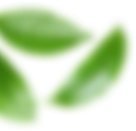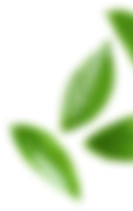An Allergy or overload of Histamine?


Allergies are an IgE medicated, histamine response to an allergen, e.g. pollen or cat.
Histamine intolerance (HIT) is a toxic response by the body due to the excessive accumulation of histamine from an inability of the body to efficiently break it down and hypersensitivity of cell antigen receptors
Symptoms of Histamine Intolerance (HIT)
- Histamine serves various functions in our body. This is why histaminosis may trigger a wide range of symptoms, affecting different organ systems.
- People suffering from HIT may display highly diverse symptoms. Every person has individual weak spots, which may be afflicted earlier than other parts in the body. Sufferers may be troubled by many of the following symptoms, either simultaneously or alternately
- Some afflictions are chronic or very frequent, others may only occur sporadically. The symptoms are so varied that the people affected by HIT often do not suspect a single trigger HIT and Gastro-intestinal and Urinary Symptoms
- Irritable stomach or an irritable bowel respectively. A direct connection between food intake and the symptoms is often difficult to discern. This is due to the fact that the ingredients of ingested foods are only slowly absorbed by the body during the bowel transit time, which may last several hours, so that problems may only manifest themselves with a considerable delay.
- Eating aged or leftover foods, or those with high histamine content, may trigger abdominal cramps and severe diarrhea within 15-30 minutes.
Histamine increases the motility of the bowel movements, so that the bolus passes the intestines faster than normal, which impairs the absorption of nutrients because of the short retention time.
- More rarely also constipation or constipation alternating with diarrhea
- Heart burn, acid reflux

- Low Histamine Diet
A low histamine diet limits foods that are high in histamine and foods that may potentially cause a release of histamine in the digestive system. High histamine foods are very individual, so unfortunately there isn’t a one-size-fits-all list of foods to include and avoid.
Bacterial growth in food, such as fermented foods and leftovers, are susceptible to high histamine levels. Additionally, certain fruits and vegetables such as spinach and tomatoes are thought to be high in histamine, especially when overripe. Other foods such as egg white are considered to be histamine-releasing foods. This concept is very popular, even in medical journal articles, but we lack solid evidence to suggest that any food can cause a direct release of histamine in the digestive system.
A low histamine diet helps some people feel better, with symptoms usually improving within one week. If a low histamine diet has not made a noticeable difference within four weeks, the diet should be discontinued.
- Diamine Oxidase Supplements
As described above, low diamine oxidase enzyme activity may lead to reduced histamine breakdown and increased absorption of histamine into the body. Luckily, the diamine oxidase enzyme is available as a supplement. The supplement is taken prior to meals and works by breaking histamine down in that meal, with potential benefits assessed very quickly. Biocare, Solgar, Holland & Barret,
- Quercetin
Quercetin belongs to a class of water-soluble plant pigments called flavonoids. Quercetin acts as an antihistamine and has anti-inflammatory properties. A variety of evidence indicates that quercetin possesses potent antioxidant properties.
- Vitamin C
Vitamin C is needed to make collagen, the “glue” that strengthens many parts of the body, such as muscles and blood vessels. Vitamin C also plays important roles in wound healing and as a natural antihistamine.
Vitamin C acts differently from antihistamine medications, reducing the amount of histamine you produce rather than blocking histamine receptors. Research suggests histamine levels may reduce by about 38% after a person takes 2 grams of vitamin C